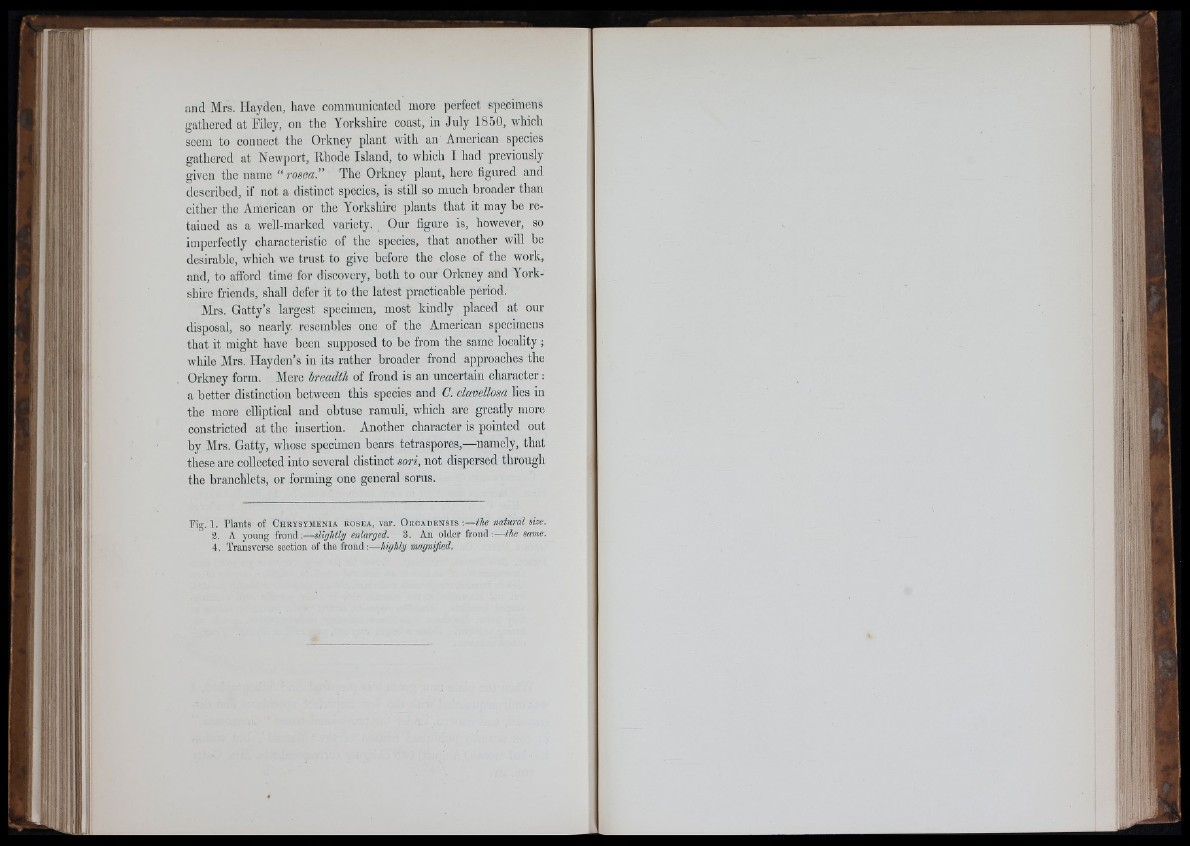
S ' ‘
and Mrs. Hayden, have communicated more perfect specimens
gathered at Eilcy, on the Yorkshire coast, in July 1850, which
seem to connect the Orkney plant with an American species
gathered at Newport, Rhode Island, to which I had previously
given the name “ rosea!’ The Orkney plant, hero figured and
described, if not a distinct species, is still so much broader than
either the American or the Yorkshire plants that it may be retained
as a well-marked variety. Our figure is, however, so
imperfectly characteristic of the species, that another will be
desirable, wliich we trust to give before the close of the work,
and, to afford time for discovery, both to our Orkney and Yorkshire
friends, shall defer it to the latest practicable period.
Mrs. Gatty’s largest specimen, most kindly placed at our
disposal, so nearly, resembles one of the American specimens
that it might have been supposed to be from the same locality ;
while Mrs. Hayden’s in its rather broader frond approaches the
Orkney form. Mere breadth of frond is an uncertain character:
a better distinction between this species and C. clavellosa lies in
the more elliptical and obtuse ramuli, which are greatly more
constricted at the insertion. Another character is pointed out
by Mrs. Gatty, whose specimen bears tetraspores,—namely, that
these are collected into several distinct sori, not dispersed througli
the branchlets, or forming one general sorus.
Fig, 1. Plants of Chrysymenia rosea, var. Orcadensis :—the natural size.
3. A young frond;— slightly enlarged. 3. An older frond;— the same.
4. Transverse section of tlie frond ;—h'
ii
ilil Iii